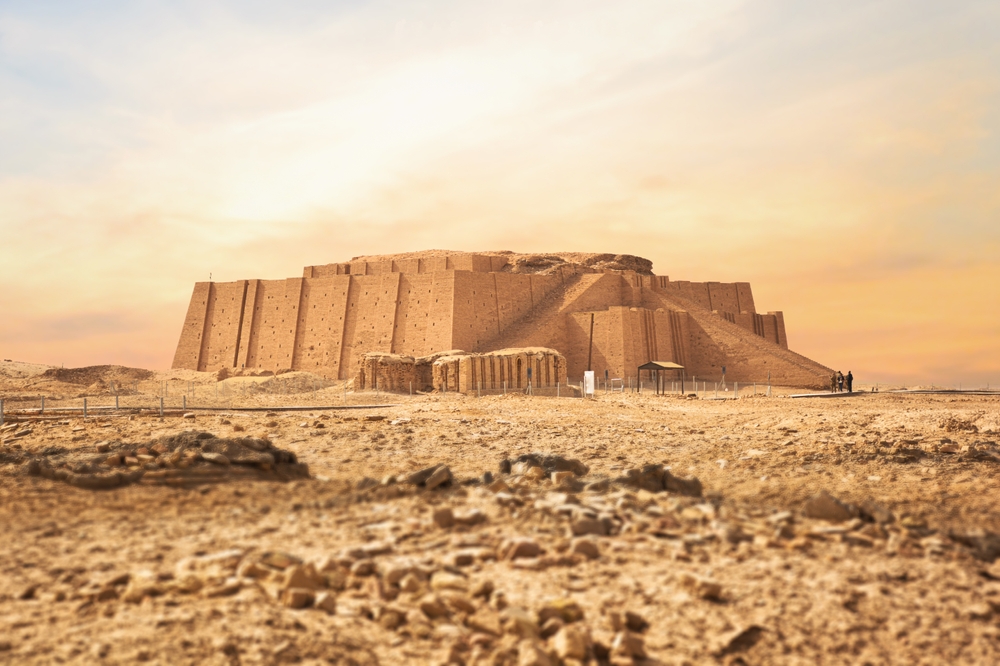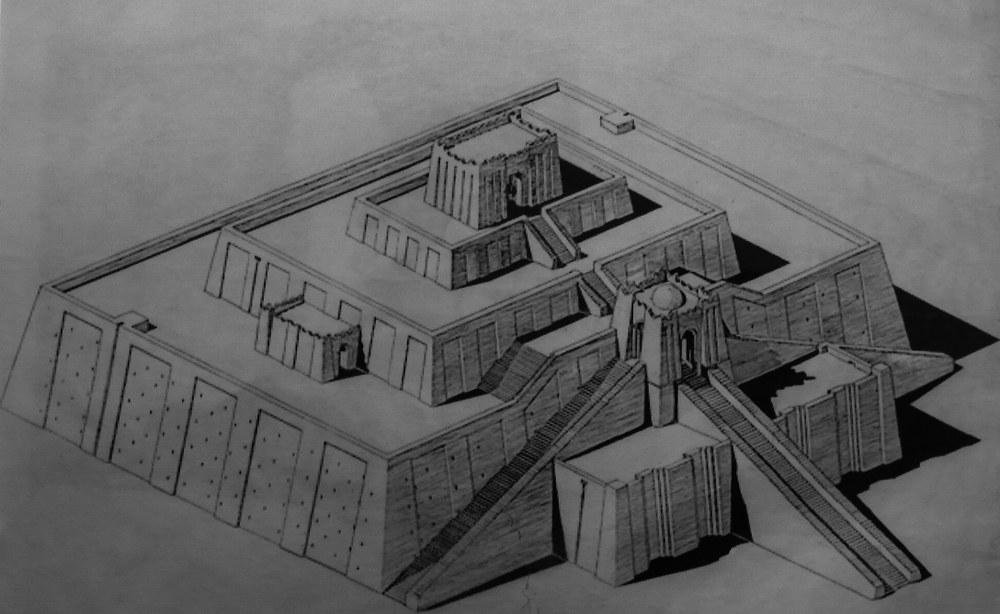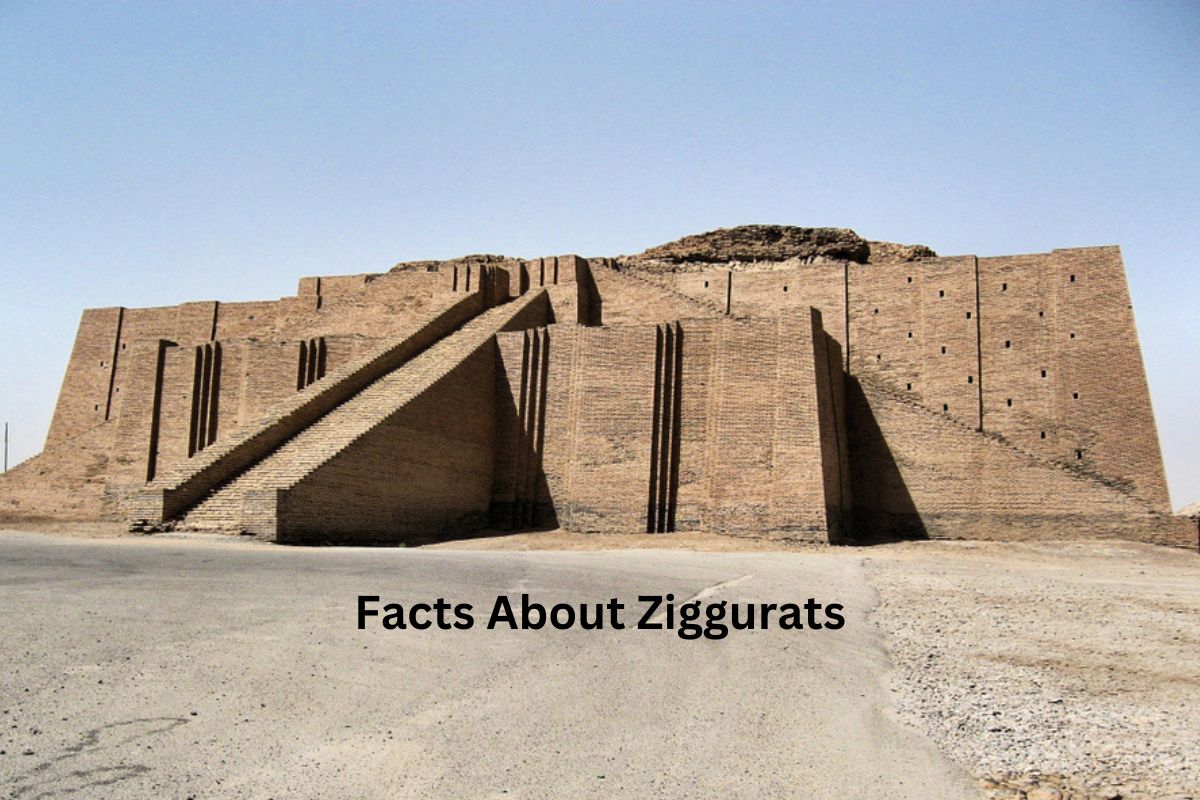Ziggurats were ancient Mesopotamian temple towers that served as religious centers and were believed to connect heaven and earth. Constructed using mud bricks, these stepped or terraced structures were prominent in civilizations such as Sumer, Akkad, and Babylonia.
Ziggurats housed temples dedicated to specific gods or goddesses, and their towering heights symbolized the link between mortal humans and the divine realm.
While access to the upper levels was restricted to priests and officials, ziggurats played a crucial role in the religious and social fabric of ancient Mesopotamia.
Today, they provide valuable insights into the religious beliefs, architectural techniques, and cultural practices of this early civilization.
Ziggurats Facts
1. Ziggurats were ancient Mesopotamian temple towers
Ziggurats were architectural structures that were prominent in the ancient civilizations of Mesopotamia, particularly in Sumer, Akkad, and Babylonia.
The term “ziggurat” comes from the Akkadian word “ziqquratu,” which means “to build high.” These structures were built as religious monuments and were considered sacred in the Mesopotamian culture.

2. They were made of mud bricks
Ziggurats were constructed using locally available materials, primarily mud bricks. The mud bricks were shaped and dried in the sun to create solid building blocks.
These bricks were stacked on top of each other to form rectangular or square platforms, with each platform slightly smaller than the one below it. This construction technique created a stepped or terraced structure, with multiple levels or tiers.
3. Ziggurats had a stepped or terraced structure
One of the defining features of ziggurats is their stepped or terraced design. The platforms or levels of the ziggurat gradually decreased in size as they ascended, creating a series of terraces.
Each level was often dedicated to a specific deity or served a particular religious purpose. The terraces were accessed via staircases, allowing people to ascend to the topmost platform where the temple was located.
The stepped or terraced structure of ziggurats was not only a practical construction method but also held symbolic significance. The tiers were believed to represent the cosmic levels or the hierarchy of the gods, with the temple at the top symbolizing the divine realm.
This design emphasized the connection between the earthly and heavenly realms and reflected the Mesopotamian belief in the sacredness of the vertical axis, connecting the heavens and the earth.
4. They served as religious centers and connected heaven and earth
Ziggurats held great religious significance in ancient Mesopotamian culture. They were believed to be the dwelling places of the gods and served as religious centers where people could connect with the divine.
The ziggurat’s towering height and prominent position in the cityscape symbolized the bridge between heaven and earth, acting as a physical link between mortal humans and the celestial realm.

5. Ziggurats housed temples dedicated to specific gods or goddesses
Each ziggurat typically had a temple or shrine located on its topmost platform. These temples were dedicated to specific deities in the Mesopotamian pantheon.
Different city-states and regions had their own patron gods and goddesses, so the temples on ziggurats varied in terms of the deities they honored. The temples were places of worship, and religious rituals and ceremonies were conducted there by priests and attendants.
6. Access to the upper levels was restricted to priests and officials
While the lower levels of ziggurats were accessible to the general public, the uppermost levels, including the temple, were usually restricted to priests, priestesses, and other religious officials.
Ordinary people could approach the ziggurat, participate in religious activities on the lower terraces, and make offerings, but only the designated religious authorities had permission to enter the inner sanctums of the temple. This exclusivity emphasized the sacredness and special status of the temple and its associated rituals.
The ziggurats’ role as religious centers and their connection between heaven and earth made them focal points for religious activities, pilgrimage, and communal worship in ancient Mesopotamia.
The temples housed within the ziggurats played a vital role in the religious and social fabric of the civilization, serving as places of veneration, guidance, and divine communication.
7. The Ziggurat of Ur is a well-known example
The Ziggurat of Ur is one of the most famous ziggurats in Mesopotamia. Located near the ancient city of Ur in modern-day Iraq, it was built around the 21st century BCE during the Sumerian period.
The Ziggurat of Ur consisted of three main levels made of baked bricks, with a temple dedicated to the moon god Nanna (also known as Sin) on the topmost level. The ziggurat was an important religious and administrative center in Ur, reflecting the city’s prominence as a powerful Sumerian city-state.
8. The Etemenanki in Babylon was a famous seven-tiered ziggurat
The Etemenanki, also known as the Tower of Babel, was a renowned ziggurat located in the city of Babylon, which was the capital of the ancient Babylonian empire.
According to historical accounts and legends, the Etemenanki was a massive seven-tiered ziggurat built by King Nebuchadnezzar II in the 6th century BCE. It was dedicated to the Babylonian god Marduk and served as a symbol of the city’s religious and political power.
9. Ziggurats declined with the rise of other civilizations
With the fall of ancient Mesopotamian civilizations and the rise of different empires and religious beliefs, the worship of Mesopotamian gods and the construction of ziggurats gradually declined.
As conquerors such as the Persians, Greeks, and later the Romans gained control over the region, they introduced their own religions and architectural styles, leading to a shift away from the worship of Mesopotamian deities and the abandonment of ziggurat construction.
10. They provide valuable archaeological insights into ancient Mesopotamian culture
Ziggurats hold significant archaeological importance as they provide valuable information about the religious beliefs, architectural techniques, and social structures of ancient Mesopotamia.
Excavations of ziggurats have uncovered artifacts, inscriptions, and texts that offer insights into the rituals, offerings, and religious practices of the time. They also shed light on the engineering skills and construction methods employed by the ancient Mesopotamians, showcasing their architectural achievements and societal priorities.
